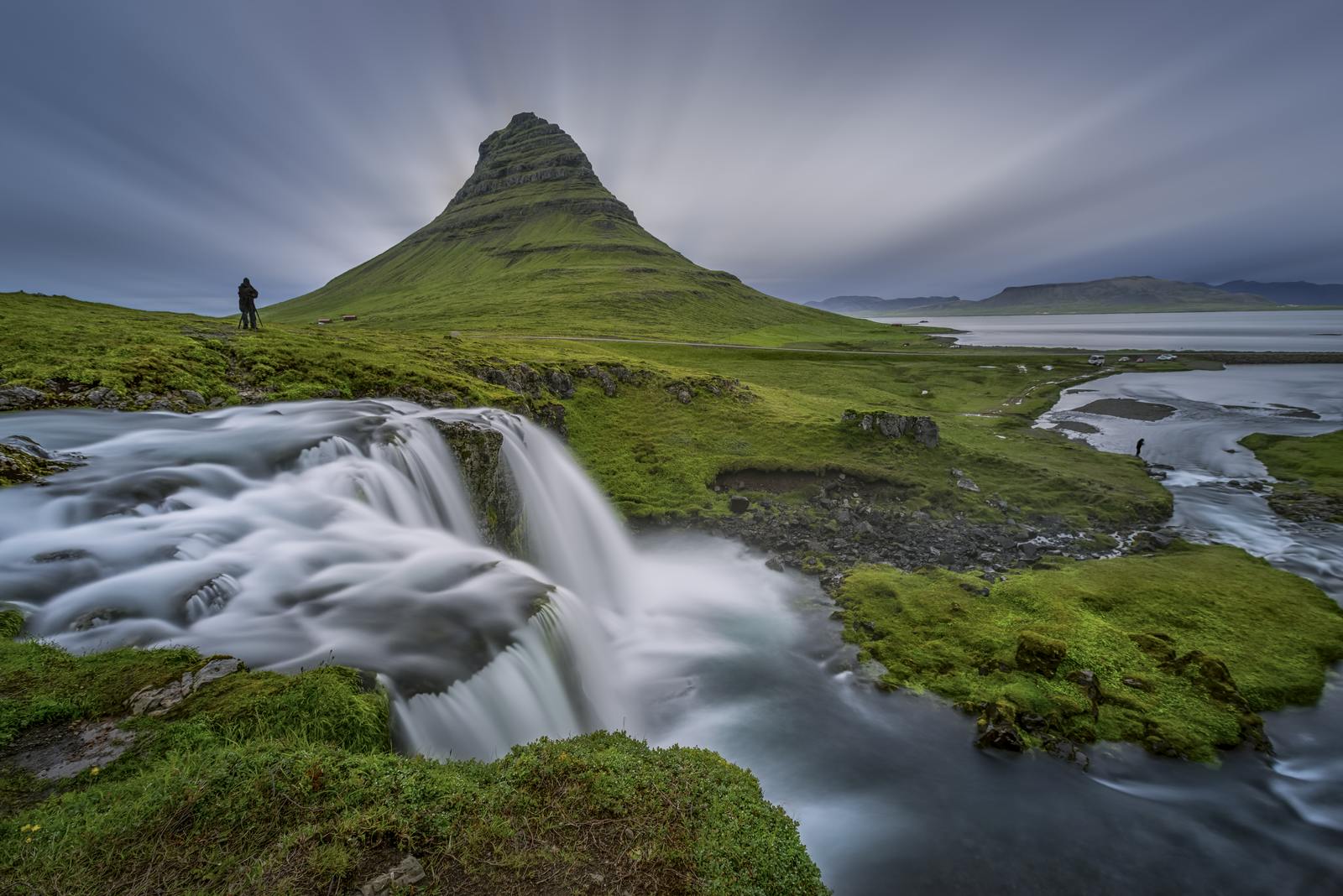
Guide to Kirkjufell Mountain on Snæfellsnes Peninsula Iceland
Kirkjufell is located on the Snæfellsnes Peninsula in West Iceland. This isolated peak draws photographers, hikers, and nature lovers from around the world. The name Kirkjufell means “Church Mountain” in Icelandic, inspired by its resemblance to a traditional church steeple.
Rising 463 metres (1,519 feet) above sea level, Kirkjufell’s shape is instantly recognisable. Its steep slopes, free-standing position, and perfectly symmetrical form have made it one of Iceland’s most photographed landmarks. If you've seen pictures of Iceland, chances are you've seen this mountain, even if you didn't know its name.
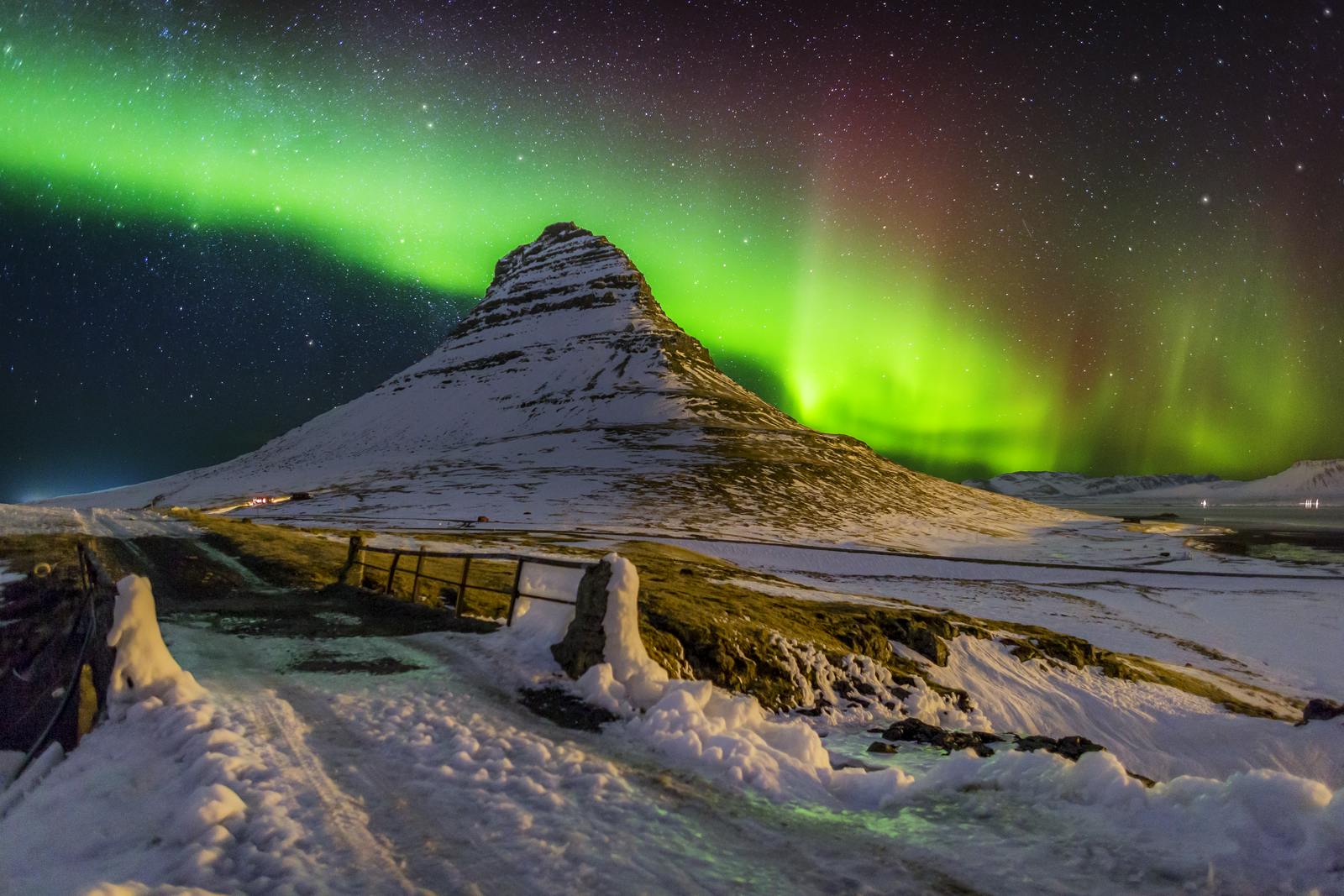
The Famous Kirkjufellsfoss Waterfall
Just across the road from Kirkjufell is Kirkjufellsfoss, a small yet beautiful waterfall that completes the perfect postcard scene. This is the classic view, Kirkjufell rising behind the falls, with water cascading over smooth rock and a vast sky framing it all. This combination makes the Kirkjufell viewpoint one of the most photographed places in Iceland.
The waterfall itself isn’t particularly tall, but it’s the symmetry and scale between the falls and the mountain that creates the magic. Photographers, especially during the golden hours of sunrise or sunset, line up here to capture long-exposure shots with the mountain reflected in nearby pools.
In winter, the scene changes completely. The waterfall partially freezes, and the snow-covered mountain glows pink and orange under the Arctic sky. If the Northern Lights are active, this is one of the most sought-after spots to capture them dancing above Iceland’s most iconic peak.
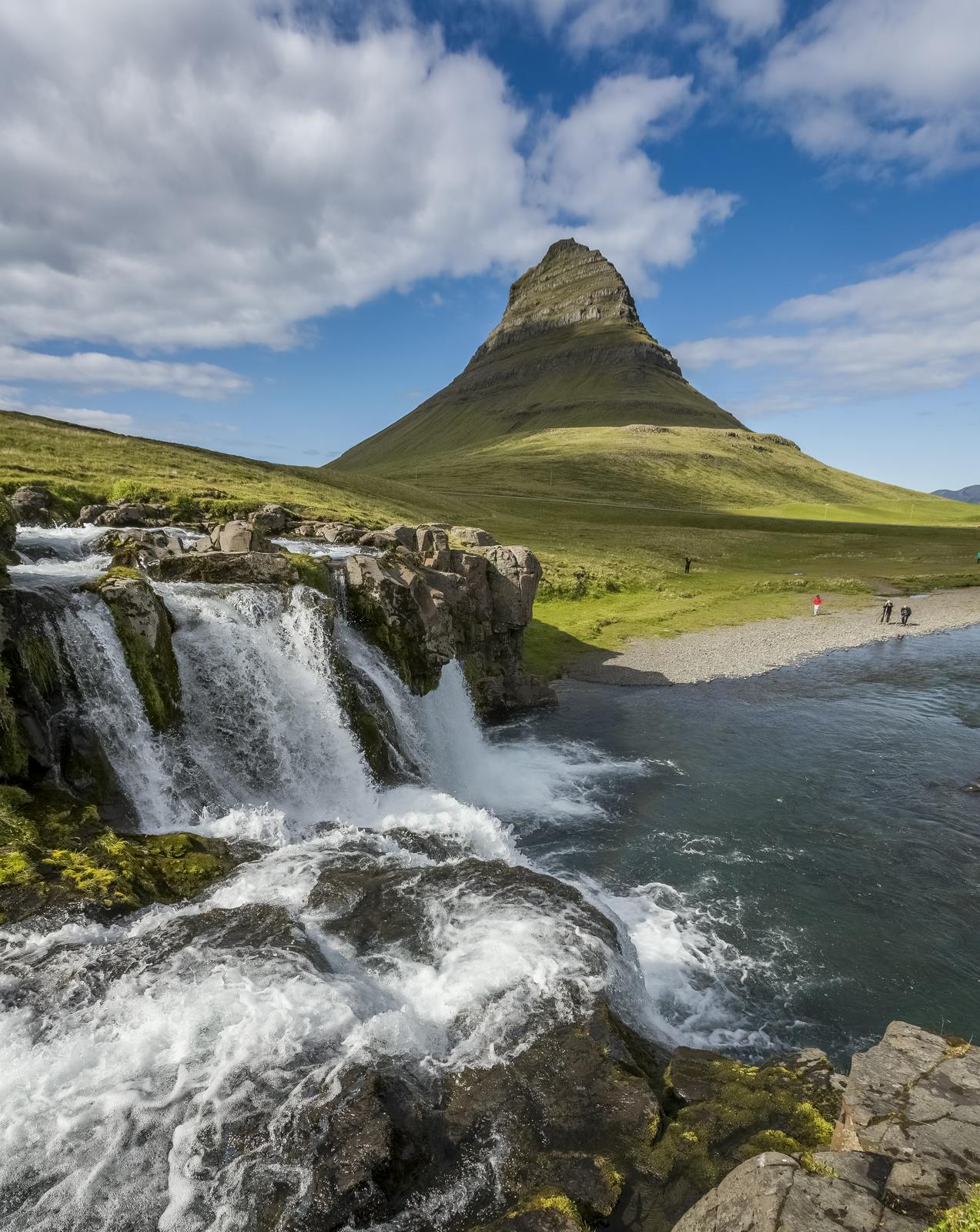
Best Viewpoints of Kirkjufell
For the most iconic and recognisable view of Kirkjufell, the best spot is from the nearby Kirkjufellsfoss waterfall. However, several other excellent viewpoints offer unique perspectives of the mountain.
What to Do Near Kirkjufell
Kirkjufell is just one part of the stunning Snæfellsnes Peninsula, often called “Iceland in Miniature” because it features many of the country’s natural highlights in one area, including volcanoes, glaciers, lava fields, black sand beaches, and dramatic cliffs.
Top things to see and do near kirkjufell:
- Take a boat tour in Grundarfjörður
- Snæfellsjökull National Park
- Hike Berserkjahraun lava field
- The black church at Búðir
- Sea cliffs at Arnarstapi
- The basalt columns at Gerðuberg
- Djúpalónssandur
- Vatnshellir cave
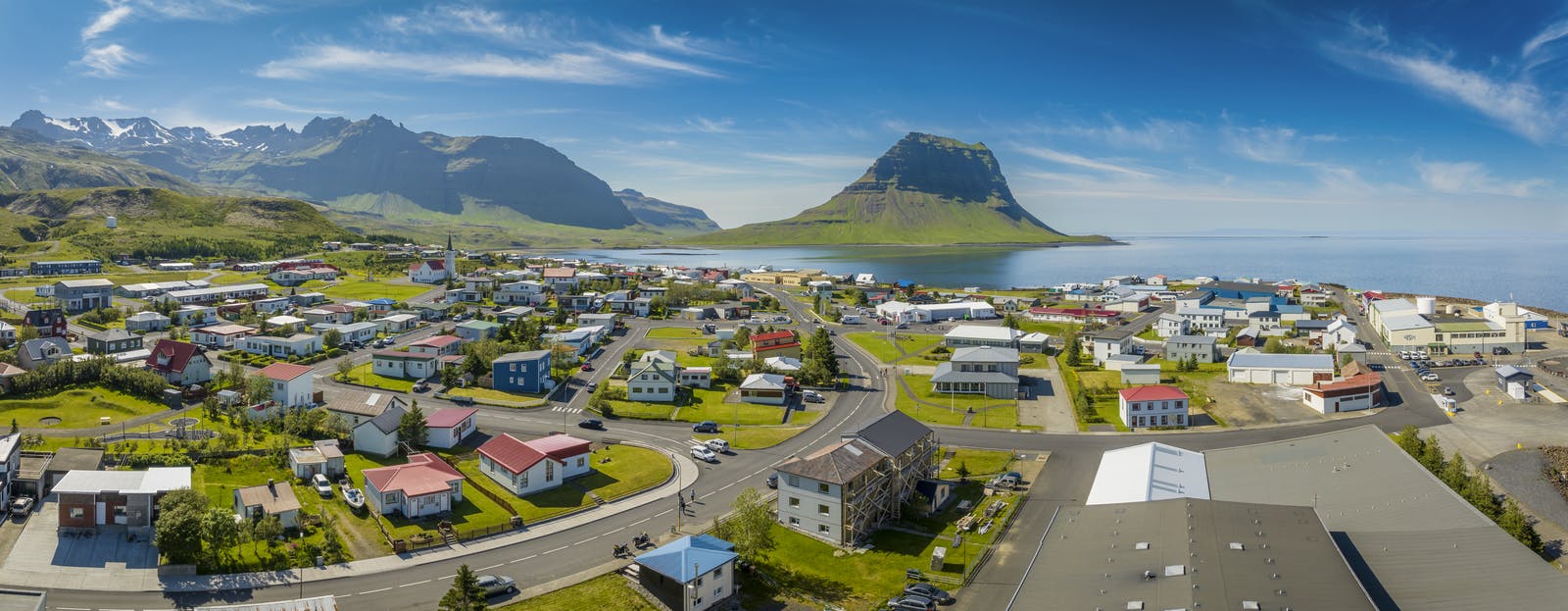
When Is the Best Time to Visit?
Kirkjufell is accessible year-round, and each season offers something different. Summer brings long daylight hours and easy road access. This is when the hiking trail and nearby waterfalls are at their most inviting. Wildflowers bloom in the fields, and the midnight sun casts dramatic light on the mountain’s slopes.
Autumn brings cooler temperatures and fewer crowds. The changing colours of the moss and grasses create a rich palette of golds and reds around the base of the mountain. Photographers love this season for its soft light and quiet atmosphere.
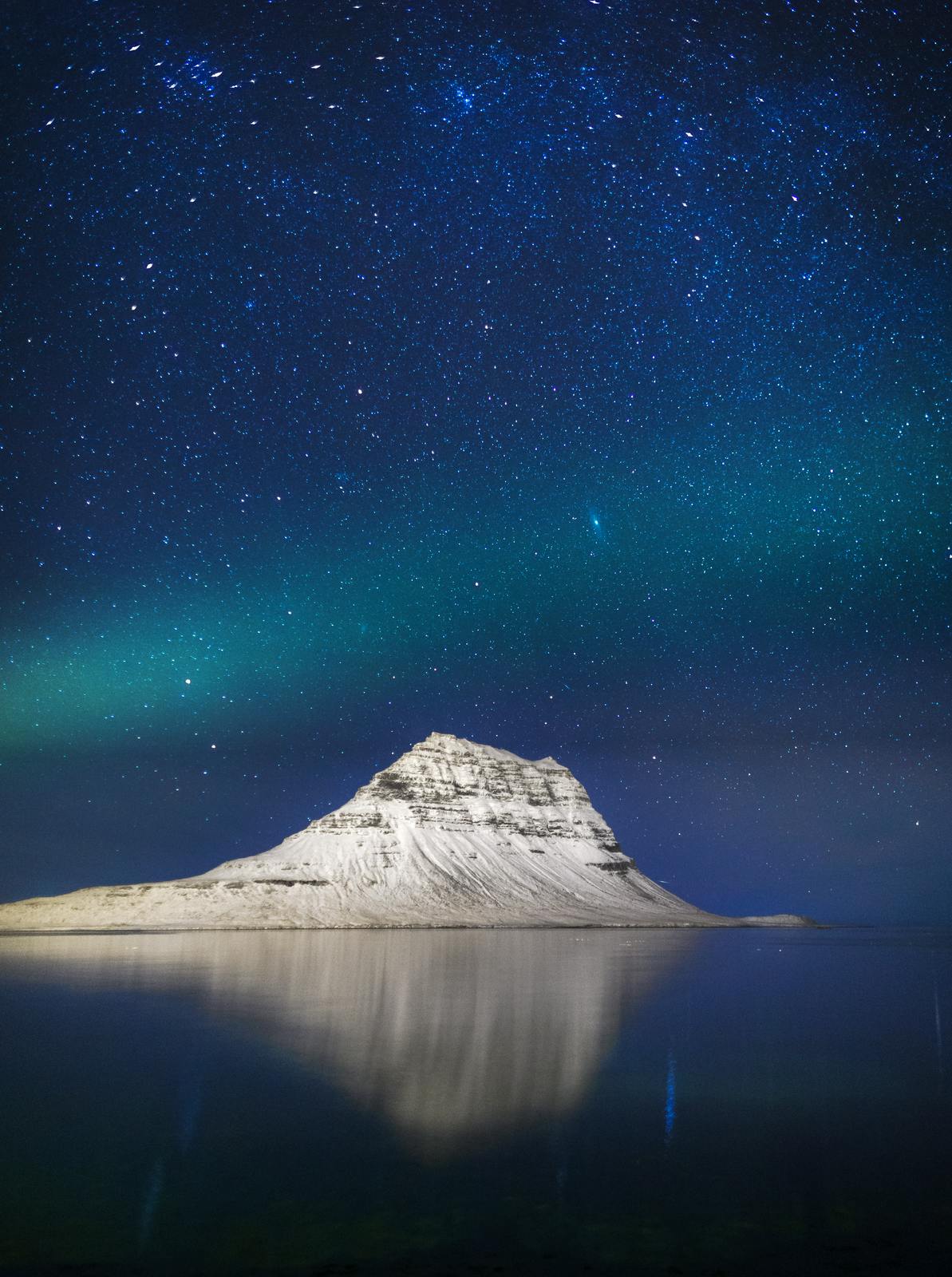
Winter turns the mountain into a snowy pyramid. While access can be limited by snow or icy roads, the reward is a peaceful, frozen landscape. Winter is also prime time for Northern Lights viewing. On clear nights, Kirkjufell becomes the perfect foreground for the aurora borealis. Read more here on the top 10 places to see the northern lights in Iceland.
Spring offers a mix of snow and early green. Rivers run strong with meltwater, and birds return to nest along the cliffs and shores nearby.
The Geological Formation
Kirkjufell is not a volcano, although it stands alone like one. Its formation is a result of complex geological processes over millions of years. The mountain is composed of layers of volcanic rock, lava, and sediment, created during multiple ice ages and shaped by glacial erosion.
During the last ice age, advancing glaciers carved through the surrounding rock, leaving behind the sharp, standalone structure we see today. These glacial movements stripped away softer materials, isolating the more resistant layers into a striking, conical shape.
The base of the mountain shows evidence of ancient lava flows, while the top consists of sandstone and tuff, a rock formed from volcanic ash.
The sharp angles and distinct ridgelines are not just beautiful, they’re geological fingerprints left behind by Iceland’s restless natural forces. Learn how Iceland’s natural forces collide and create new landscapes at Perlan’s Forces of Nature exhibition.
Can You Hike Kirkjufell?
Hiking Kirkjufell is possible, but it’s not recommended for casual hikers or anyone without proper experience. The mountain is steep and slippery, with loose rock and narrow ridgelines. Several sections require ropes, scrambling, and a good head for heights.
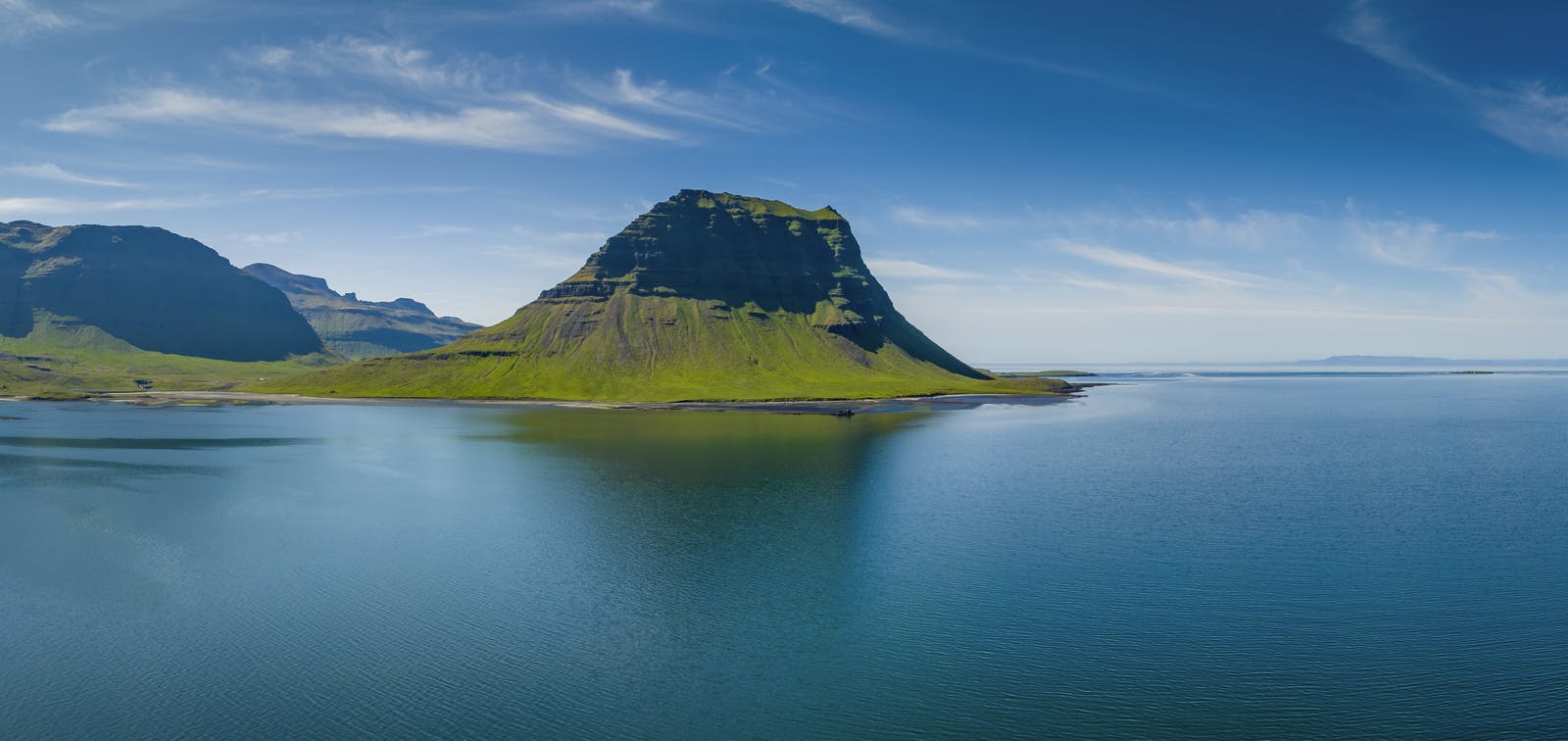
Unfortunately, accidents have happened on the mountain. It may look inviting from the ground, but the climb involves significant risk. Local guides offer small-group tours during the summer months, and they’re the best way to attempt the summit if you’re set on climbing. Without a guide, the ascent should not be attempted.
If you prefer a safer and equally scenic experience, hiking the nearby Kirkjufell viewpoint trail is the better option. This short trail loops around Kirkjufellsfoss and offers excellent views of both the mountain and the surrounding fjords.
Learn Before You Go
Before heading to Kirkjufell, consider visiting Perlan, a science and nature museum located in Reykjavík. Perlan offers immersive exhibits that help explain Iceland’s geology, glaciers, and weather patterns. Understanding the natural forces that formed mountains like Kirkjufell adds a deeper dimension to your trip.
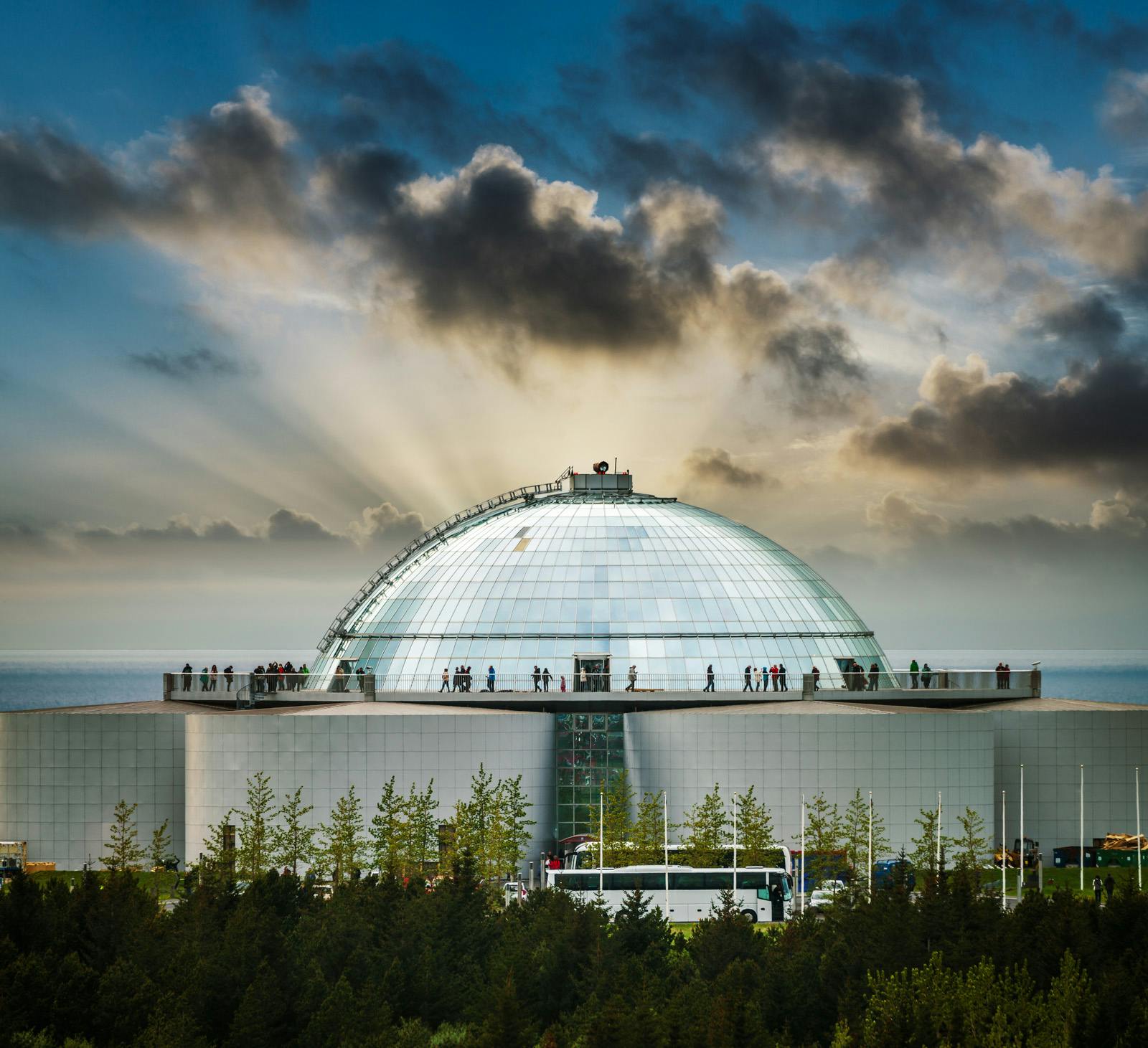
There’s also a planetarium and a 360-degree viewing platform offering views of Reykjavík and, on clear days, the distant Snæfellsnes Peninsula. A visit to Perlan provides context, insight, and excitement before stepping out into Iceland’s wild scenery.
FAQ
Where is Kirkjufell located?
Kirkjufell is on the north coast of the Snæfellsnes Peninsula in West Iceland, near the town of Grundarfjörður.
How was Kirkjufell formed?
The mountain was formed through layers of volcanic rock and glacial erosion over several ice ages, giving it its unique shape.
What does “Kirkjufell” mean?
“Kirkjufell” means “Church Mountain” in Icelandic, named for its resemblance to a church steeple.
What is Kirkjufellsfoss?
Kirkjufellsfoss is the waterfall located near the base of the mountain. It’s a popular photo spot, especially at sunrise or sunset.
Is Kirkjufell featured in Game of Thrones?
Yes, it appeared as “Arrowhead Mountain” in Seasons 6 and 7, increasing its popularity worldwide.
When is the best time to visit Kirkjufell?
Summer offers the best access and light for photography. Winter is great for Northern Lights, but access can be limited.
Why visit Perlan before going to Kirkjufell?
Perlan provides insights into Iceland’s geology, glaciers, and climate, enriching your understanding of what you’ll see at Kirkjufell.








